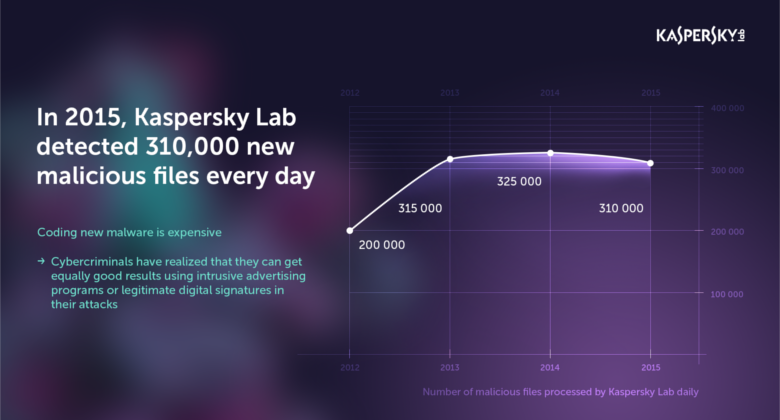15,000 less malicious programs were coded per day last 2015 according to Kaspersky Lab, with the year ending in a daily figure of 310,000 new files. The security group attributes the decline to two main factors: the expense of malware creation; and the emergence of other forms of attacks.
“Cybercrime has lost the last touch of romance. Today, malware is created, bought and resold for specific tasks. The commercial malware market has settled and is evolving towards simplification. I think we will no longer see malicious ‘code for the code’. This trend is also observed among the operators of targeted attacks,” said Vyacheslav Zakorzhevsky, head of Kaspersky Lab’s anti-malware team.
The malware market last experienced robust growth in 2013, hitting 315,000 new files every day compared to 2012’s 200,000. Thereafter, market saturation slowed things down to 325,000 in 2014.
As opposed to traditional means such as rootkits, bootkits, and virus replication, cyber criminals have been seeing a better return of investment in exploiting advertising programs and legitimate digital signatures. In fact, an additional 5-percent of users have been infected despite the cost-cutting measure.
The shift to these seemingly harmless adware marks the evolution of cybercrime into a pseudo-businesses engaged in promoting questionable software, activities, and other software. Another trend to look out for is the use of bought or stolen digital certificates—costing only a few tens of dollars—to bypass security software.
